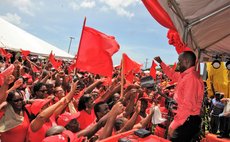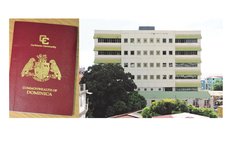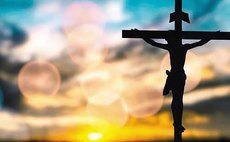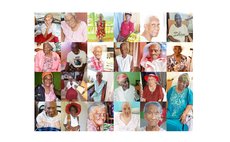On 29 May,1979 there was a battle of civilians' stones against the government's guns. Stones won
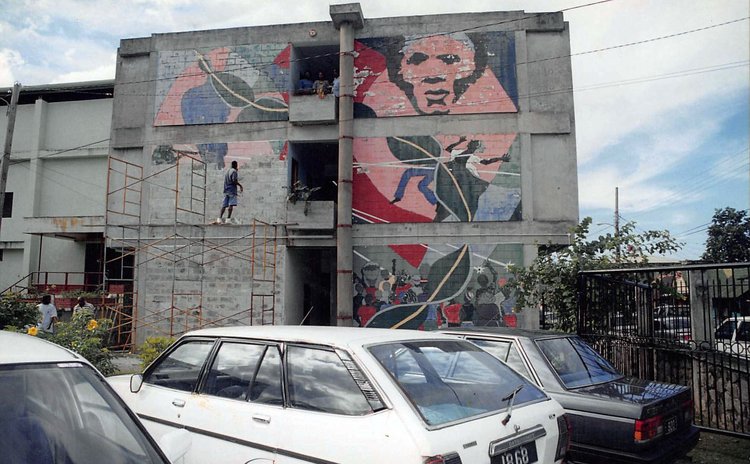
On 29 May 1979 Prime Minister Patrick Roland John finally met his Waterloo when Dominicans came together in a rare demonstration of togetherness to defeat a man that they had considered to be a budding tyrant and bully.
And although supporters of the current Dominica Labour Party (DLP) would prefer that this aspect of our history was buried forever, a prominent author of the history of Dominica, Dr. Irving André has eloquently recalled that day in one of his latest books.
"It rained later that day; a steady persistent downpour that washed the blood-stained streets and dispersed the crowds which had gathered on the streets earlier before," wrote Dr. André in the book "The Rise and Fall of Patrick Roland John" about May 29, 1979, the riots that occurred just six months after Dominica gained independence from Britain and three months before Hurricane David devastated its infrastructure and economy.
Dr. André added: "In the vicinity of the Ministry stones on the roads served as grim reminders of what had transpired before while the smell of cordite hovered over the scene, many gripped by anger over what they had witnessed."
What they had witnessed was the shooting of unarmed protesters by the army and police of the Dominica Labour Party administration of Patrick John on May 29, 1979.
On Saturday 29 May 2021, Dominicans will remember the 42nd anniversary of 29 May with a demonstration near the bridges in Canefield. And they should because 29 May 1979 changed the trajectory of the political development of Dominica; it is a day that Dominicans must not repeat.
But 29 May 1979 could reoccur in some form if we continue to forget the lessons of history, if we continue to ignore the demands of the people and if we continue to ignite the flames of political divisiveness, and continue to dismantle the very foundations of our fledgling democracy, while we stand aside and look.
"Those who cannot remember the past are condemned to repeat it", according to philosopher George Santayana.
Marcus Garvey, the famous Jamaican, said it better: "People without the knowledge of their past history, origin and culture is like a tree without roots".
So, 29 May 1979 is one of the major roots of the tree of our political development. It is definitely one of the most significant dates in the short history of Dominica. Yet many will forget that date and fail to consider its significance when it comes around. In our view, May 29, 1979, is as momentous an occasion as Independence Day, Emancipation Day, the devastation of Dominica by Hurricane David on August 29, 1979, and the billion-dollar damage-causing Hurricane Maria on September 18, 2017.
Among the main leaders of the May 29, 1979 riots, only Charles Savarin is alive today. Dame Eugenia, the prime minister who benefited from the riots, is dead and so is Louis "Zarbocka" Benoit, the president of the Waterfront and Allied Workers Union (WAWU). Nevertheless, in a remarkable twist of history, Charles Savarin is not only very much alive, he is Dominica's President in a Dominica Labour Party government.
Anthony Astaphan SC, the éminence grise of the current ruling Dominica Labour Party regime, has described the 29 May 1979 revolution as a "kool wosh brigade" because the rioters used stones and bottles to pelt at their tormenters. But 29 May 1979 was much more than throwing stones.
The current economic and social conditions in Dominica and in the period leading up to the civil unrest of 29 May 1979 are so similar that some commentators have predicted that history may be about to repeat itself. But we doubt Dominicans can come together again as they did in 1979 to overthrow an extremely unpopular government, even if the economic conditions in 2021 are similar to the circumstances in 1979.
In a series of essays on the riots (published in the Sun in 2016) Historian Dr. William "Para" Riviere agrees that "the ousting of the John regime was rooted substantially in the economic circumstances of the island. Internal self-government, labelled Associate Statehood, had been granted by the Colonial Power in 1967, leaving the island, except for grant-in-aid, to paddle its own canoe … A conspiracy of forces would plunge the island's economy into a crisis --- the 1974 Budget debate in Parliament called upon the already hard-pressed public to bear an additional burden of taxation --- neither the State sector nor the co-operative or private sectors advanced --- Productive capacity slackened, if not stagnated --- unemployment and underemployment escalated".
Strapped for cash, the government of Patrick John turned to apartheid South Africa, the establishment of a pseudo- free port zone in Portsmouth conceived by Texas businessman Don Pierson, and undertook other questionable capital ventures.
As the population endured that dreadful economy, the Government further risked confrontation with the militant trade unions by enacting the Industrial Relations (Amendment) Act and the Prohibited and Unlawful Societies and Association Act (The Dread Act).
But what are the main lesson that Dominicans must learn from 29 May 1979?
One lesson is that it is extremely difficult, almost impossible, to remove a government whose leaders have corrupted all major institutions; it took blood and stones and guns in 1979; in 2021 it will not be easy to remove any political party that is hell-bent on staying in power. Another "kool wosh brigade" in Dominica of 2021 is probably a bridge too far.
